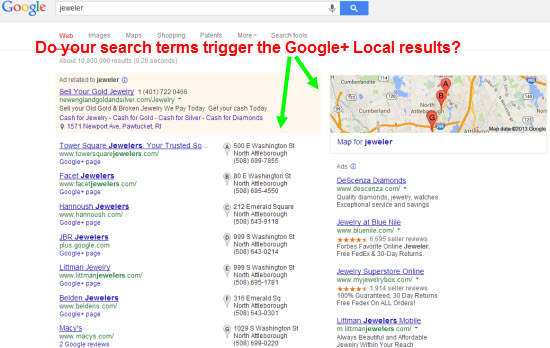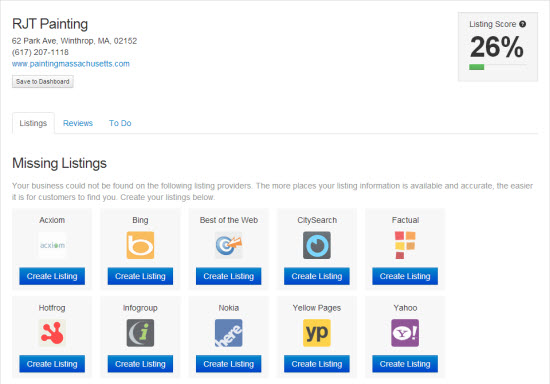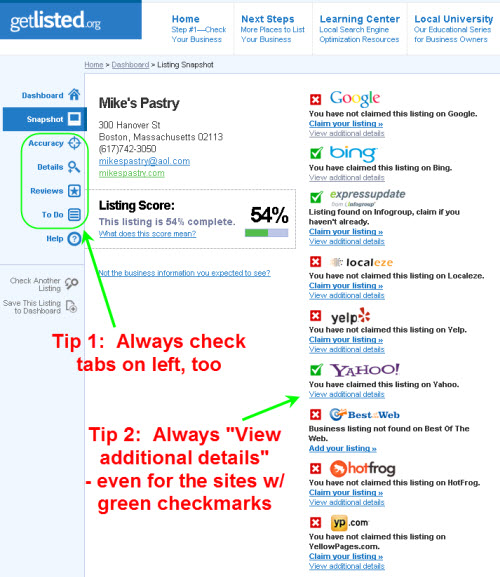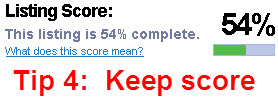By a “local SEO audit” I mean a list of suggestions that tell you (a) what’s wrong with your visibility in local search and (b) exactly what needs to be fixed. It’s like getting a physical for your business.

Lots of business owners pay me to show them how to fix their local presence. If you’re considering that, why would I say anything to you other than “Hey, hop on board”? (Besides the fact that my inner Eagle Scout wouldn’t approve.)
Because within each local SEOer lurks a Dr. Jekyll and a Mr. Hyde:
On the one hand, we love finding simple, relatively obvious solutions to problems.
On the other hand, we dig a challenge. It’s always nice to uncover problems that might be hidden to most people who don’t wrangle with Google & Co. every day.
More importantly, it’s nice for you not to have to pay for something you may not even need. Which means you should spend a few minutes to determine how many gaps a local SEO audit would fill that you couldn’t (or wouldn’t want to) fill yourself.
If you’re considering having someone “audit” your local-search presence and offer suggestions, take these 6 steps first:
(By the way, I suggest doing these even if you’re not considering outside help.)
To-do Item 1: Be in business for at least a couple of months. Have something for us to critique. Give Google and other sites the chance to rank you well. That means you at least need to have a website, and really should have a Google+ Local (AKA Google Places) page that you’ve claimed.
To-do Item 2: See if the “local map” comes up for the terms you want to be visible for. If it doesn’t, try searching for those terms in other cities. If no map comes up then, think of search terms that are relevant to your business that do trigger the Google+ Local results. If you can’t even think of those, then local SEO probably isn’t what you need to reach more customers.

To-do Item 3: Do a GetListed.org scan of your business. You can get some crucial next steps handed to you on a platter. (Bonus points if you do scans on your competitors’ businesses and see where they might have an advantage.)

To-do Item 4: Read Google’s rules – and make sure your Google listing complies with them. (Bonus points: Have an employee or friend also read the rules and look at your Google listing and see if you seem to be breaking any of them.)
To-do Item 5: Snoop on your competitors. Are they doing anything (within Google’s guidelines) that you’re not? What are they doing (or not doing) that you can try?
To-do Item 6: Ask yourself some questions about exactly what you want out of the audit:
Assume that you get the rankings you want…but your phone doesn’t ring more than it has been. Then what? What would you do to turn that visibility into more calls? Beef up your site with more and crisper info on your services? Get more reviews? Get a couple of “success stories”? Whatever it might be, can you possibly get started on it before you work on your rankings – so that you’re not just pouring more water into a bucket with a hole in the bottom?
Are you OK with receiving good news – a relatively “clean bill of health”? Sometimes my main advice – after looking over everything – is “Keep doing what you’re doing – you’ll get there.” Would you value that kind of input?
What are you not willing to do to get more visible? If your local SEOer tells you that you need to clean up your backlinks profile, would you do it? Asking more customers for reviews? Doing away with the giant and slow-loading “ego shot” photo on your homepage? What if I told you that you need to stop paying YellowPages or CitySearch for call-tracking programs?
Who will implement the suggestions you get?
In a nutshell, my advice is: do your own quick SEO audit first. You may not uncover much, in which case it would probably be time to get a local-SEO geek to help. But hey, you might be surprised at what you can discover on your own in 30-40 minutes.

 Google Places isn’t a person. Why would it have a “face”?
Google Places isn’t a person. Why would it have a “face”?
 In the world of local search, GetListed is handier than duct tape and a Swiss Army Knife put together. It instantly analyzes how locally visible your business is and gives you specific recommendations for how to get more visible. Plus, the rest of the site contains some
In the world of local search, GetListed is handier than duct tape and a Swiss Army Knife put together. It instantly analyzes how locally visible your business is and gives you specific recommendations for how to get more visible. Plus, the rest of the site contains some  I had a brilliant idea: little buttons you could put on your website that customers simply could click to write reviews for you…but then I learned the chaps at
I had a brilliant idea: little buttons you could put on your website that customers simply could click to write reviews for you…but then I learned the chaps at  A simple plugin-like tool that shows you a really sexy heatmap of where your website visitors click, the traffic sources those clicks come from, how far down the page they scroll, and other crucial intel.
A simple plugin-like tool that shows you a really sexy heatmap of where your website visitors click, the traffic sources those clicks come from, how far down the page they scroll, and other crucial intel. A screenshot tool and photo-editor wrapped up into one very handy bundle. You need
A screenshot tool and photo-editor wrapped up into one very handy bundle. You need 

